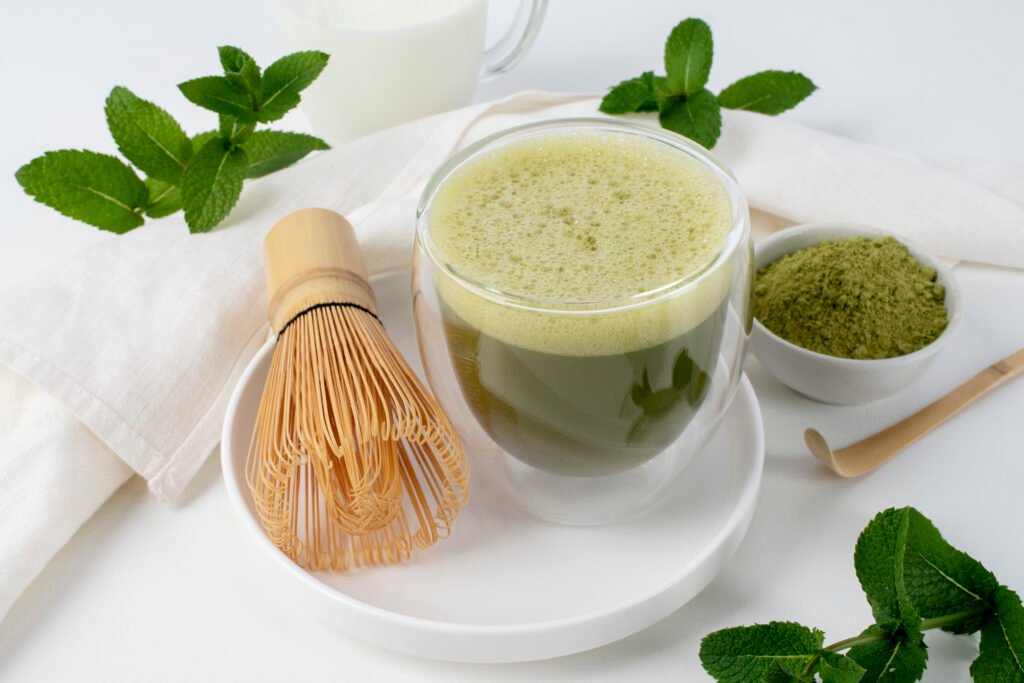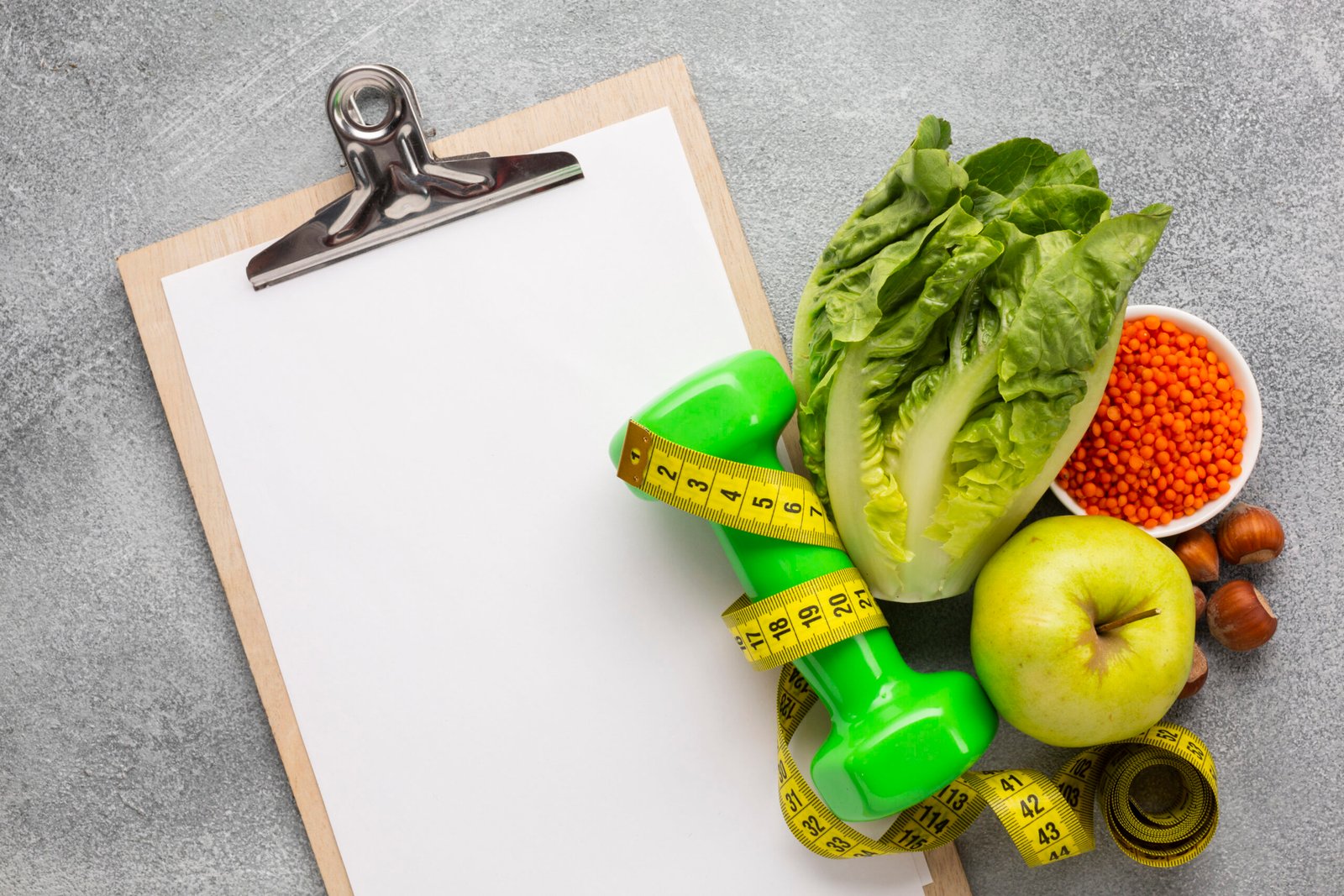5 Key Differences That Make Green Tea for Fat Burning More Effective: Matcha vs. Traditional
Throughout my journey to improve my health and well-being, I began to see some effective and natural alternatives so that I could maintain my focus and speed up my metabolism. That’s when I discovered the truth about green tea and its benefits. But there are different types of tea, such as matcha and traditional green tea, that’s when I got stuck and asked myself the following question: which is the best? That’s what we’re going to find out in this article, come with me.
Matcha and Traditional Green Tea for Fat Burning have gained widespread attention as natural allies in the pursuit of weight loss and better health. In recent years, the interest in teas and functional beverages has surged — and for good reason. These two green tea varieties, while often grouped together, offer distinct benefits when it comes to boosting metabolism and supporting fat burning.
In this article, we’ll dive into the key differences between matcha and traditional Green Tea for Fat Burning, uncovering the specific mechanisms of how each works within the body to support this process. We’ll explore their unique nutritional profiles and provide guidance on how to incorporate them effectively into your daily routine to maximize their impact on Green Tea for Fat Burning.
Whether you’re just beginning to adopt healthy habits or are seeking to optimize your existing weight loss journey, this guide will empower you to make an informed choice regarding the best type of Green Tea for Fat Burning to suit your needs.
Stay with us as we explore the underlying science, offer practical tips for utilizing Green Tea for Fat Burning, and share expert-backed insights that establish these two teas as powerful tools not only for burning fat but also for improving your overall well-being.
Understanding Matcha and Traditional Green Tea for Fat Burning

Before we dive into the nuanced differences between matcha and traditional Green Tea for Fat Burning, it’s essential to establish a foundational understanding of what each entails. Traditional Green Tea for Fat Burning is derived from the leaves of the Camellia sinensis plant, which undergo a rapid drying and processing method.
This careful approach helps preserve a significant portion of the beneficial antioxidants and nutrients inherent in the leaves, establishing it as a widely favored choice for individuals aiming to enhance their overall health and explore the potential of Green Tea for Fat Burning.
Conversely, matcha represents a distinct and specialized type of green tea cultivated in shaded conditions, a practice that notably elevates its levels of chlorophyll and other health-promoting compounds relevant to Green Tea for Fat Burning.
Unlike traditional green tea, where the leaves are steeped in water and then discarded, matcha involves grinding the entire leaf into an exceptionally fine powder. This unique preparation method allows the consumer to ingest the whole leaf when preparing the beverage.
Consequently, this results in a substantially higher concentration of antioxidants and nutrients, positioning matcha as a particularly intriguing option for those specifically focused on weight loss and leveraging the properties of Green Tea for Fat Burning.
1- Antioxidant Content: What Makes the Difference?
One of the most compelling factors that elevates matcha and traditional green tea to superfood status, especially for weight management, is their remarkable antioxidant profile, with a particular emphasis on catechins.
Research consistently demonstrates that matcha, due to its unique cultivation and processing, boasts a significantly higher concentration of EGCG (epigallocatechin gallate) – a powerhouse antioxidant specifically lauded for its potential to accelerate fat burning.
According to pivotal research published in the Journal of Nutritional Biochemistry, the daily consumption of matcha can indeed increase your metabolic rate by up to 4% more compared to traditional green tea, indicating its superior thermogenic effect.
Furthermore, a compelling comparative study reinforced these findings, showing that individuals who regularly consumed matcha experienced a more pronounced and significant reduction in overall body fat when juxtaposed with those who drank traditional green tea.
This superior efficacy is attributed not solely to the higher EGCG content, but also to the distinct way matcha is absorbed and processed within the body. It actively promotes fat oxidation – the process where the body breaks down fat for energy – particularly during physical activity, making it an exceptional ally in the pursuit of sustainable fat loss.
2- Preparation and method of consumption
The way you prepare and consume both matcha and traditional green tea plays a surprisingly significant role in influencing their fat-burning effectiveness and the overall benefits you derive. Traditional green tea is typically prepared by steeping its leaves in hot water, a method that extracts beneficial compounds but leaves a portion of the nutrients behind.
Matcha, in stark contrast, involves whisking finely ground tea leaves directly into water, creating a thick, rich, and often frothy beverage. This fundamental difference in preparation has crucial implications for maximizing the benefits for fat burning:
- Matcha is Consumed in its Entirety: Because the entire tea leaf is ground into a fine powder and dissolved into the drink, you literally consume all the leaves and, consequently, absorb a much higher concentration of all the nutrients, antioxidants, and fat-burning catechins (like EGCG). This comprehensive intake ensures you’re getting the full spectrum of its metabolic benefits.
- Traditional Green Tea vs. Absorption: While traditional green tea is undeniably healthy and beneficial, the steeping method means that not all beneficial substances are fully extracted or absorbed by the body. Some compounds remain trapped within the leaves, leading to a less efficient delivery of certain fat-burning properties compared to consuming the whole leaf.
Beyond nutrient absorption, the very method of preparing and consuming matcha also subtly helps to increase satiety. The unique, thicker consistency of the whisked drink can lead to a greater feeling of fullness and satisfaction, naturally aiding in portion control and helping to prevent overeating throughout the day. This contributes an additional, often overlooked, layer to its role in fat management
Comparison Chart: Matcha vs Traditional Green Tea
| Feature | Matcha | Traditional Green Tea |
|---|---|---|
| Preparation Method | Fine powder mixed in water | Leaves infused in hot water |
| Antioxidant Content | More concentrated | Less concentrated |
| Satiety | Bigger | Minor |
| Metabolic Rate | Increases by up to 4% | Minor increase |
3- Effects on Metabolism and Fat Burning
The powerful effects of polyphenols, particularly catechins, and other bioactive substances uniquely concentrated in both matcha and traditional green tea have been the subject of extensive scientific scrutiny. Their influence on metabolism and body composition is a key reason for the growing interest in Green Tea for Fat Burning.
Matcha, in particular, has consistently been shown to be exceptionally effective in increasing fat oxidation during physical exercise, as well as significantly helping to control appetite – two crucial pillars for sustainable weight management.
In a groundbreaking study conducted at Universidade de Kyoto, researchers meticulously observed that the group of participants who regularly consumed matcha prior to engaging in physical activity experienced a significantly greater fat burning rate compared to their counterparts who did not. This compelling evidence underscores matcha’s direct role in enhancing the body’s ability to utilize fat as fuel.
Additionally, the strategic combination of matcha with consistent physical activity can create a powerful synergy that dramatically boosts overall weight loss efforts. The natural presence of caffeine in matcha, which is notably higher than in traditional green tea, acts as a potent natural thermogenic agent.
This means it actively helps to increase energy levels and elevate performance during workouts, directly enabling you to burn more calories and stored fat. This unique blend of catechins (especially EGCG) and caffeine makes both matcha and traditional Green Tea for Fat Burning an invaluable addition to any regimen aimed at optimizing metabolic function and achieving effective weight loss. It’s not just about the calories burned during exercise; it’s about improving your body’s efficiency at burning fat, a hallmark of consistent Green Tea for Fat Burning.
4- Calming Properties and Stress Management
One of the lesser-known but equally significant benefits associated with the consumption of both matcha and traditional green tea is their remarkable calming effect, which plays a crucial role in holistic well-being. Both teas naturally contain L-theanine, a unique amino acid celebrated for its ability to promote profound relaxation and effective stress reduction without inducing drowsiness.
However, matcha stands out for its significantly higher L-theanine content, which works in fascinating synergy with its natural caffeine. This combination provides a distinct sense of calm alertness, enhancing focus without the jitters often associated with coffee.
Reducing chronic stress levels is absolutely critical for individuals striving to lose weight. Prolonged stress is notoriously associated with weight gain, particularly the accumulation of stubborn fat in the abdominal region, largely due to the release of cortisol.
Therefore, making a conscious choice to include matcha or traditional green tea in your routine can not only contribute to direct fat-burning mechanisms but also, by fostering a more balanced mental state and mitigating the physiological impacts of stress, it indirectly supports the body’s natural capacity for weight loss. This makes these teas invaluable components of a comprehensive weight management strategy.
5- Final Considerations on Which One to Choose
When it comes to choosing between matcha and traditional green tea for weight loss, we tend to consider not only individual benefits, but also our personal tastes and lifestyle. Matcha offers a more robust nutritional profile and is more effective at burning fat; however, green tea can be a more affordable and easy-to-prepare option for beginners.
Regardless of your choice, both offer significant health benefits and can be helpful in your weight loss journey. The important thing is to integrate these teas into your routine in a conscious and balanced way, observing how each one impacts your body and your preferences.
See more articles:
8 Things You Didn’t Know About Green Tea and Weight Loss
NOTES
- Matcha and traditional green tea both help burn fat, but they have different compositions and effects.
- Matcha has more antioxidants and speeds up metabolism more.
- Traditional green tea is lighter and easier to prepare on a daily basis.
- Both contain L-theanine, which helps control stress.
- Choose the one that best fits your routine — or use both in a complementary way.
Frequently Asked Questions (FAQs)
- Is matcha better than green tea? Yes, matcha has a higher concentration of antioxidants and may be more effective at burning fat.
- Which tea is easiest to brew? Green tea is generally easier to brew, while matcha requires a bit more technique to get the right consistency.
- Can I consume matcha every day? Yes, as long as it is part of a balanced diet, daily consumption of matcha can bring health benefits.
- Are there side effects in excess? Excessive consumption can lead to problems such as insomnia or malaise due to the high concentration of caffeine.
- When is the best time to consume matcha or green tea? Ideally, it should be consumed in the morning or before training to make the most of its energy-boosting and fat-burning effects.
- Can matcha replace coffee? Yes, it can be an interesting alternative to coffee, offering sustained energy without the caffeine spikes.
Checklist: How to Include Matcha and Green Tea in Your Diet
- Choose a quality brand for matcha and green tea.
- Try different preparations: lattes, smoothies or simply with water.
- Observe how your body reacts to the consumption of each one.
- Integrate it into your meals: use matcha in recipes such as cakes, and green tea as a side dish in your daily menu.
- Monitor the effects on your energy and fat burning.
Now that you’re armed with the essential knowledge and practical tools regarding Green Tea for Fat Burning, it’s the perfect time to put this information into consistent practice and directly experience how these remarkable drinks can positively and significantly influence your weight loss journey.
We also encourage you to explore the wealth of other valuable content available on our blog, where we delve deeper into various healthy habits and offer exciting recipes specifically featuring both matcha and traditional Green Tea for Fat Burning.
Remember, the power to transform your well-being and harness the benefits of Green Tea for Fat Burning is ultimately in your hands!














Post Comment